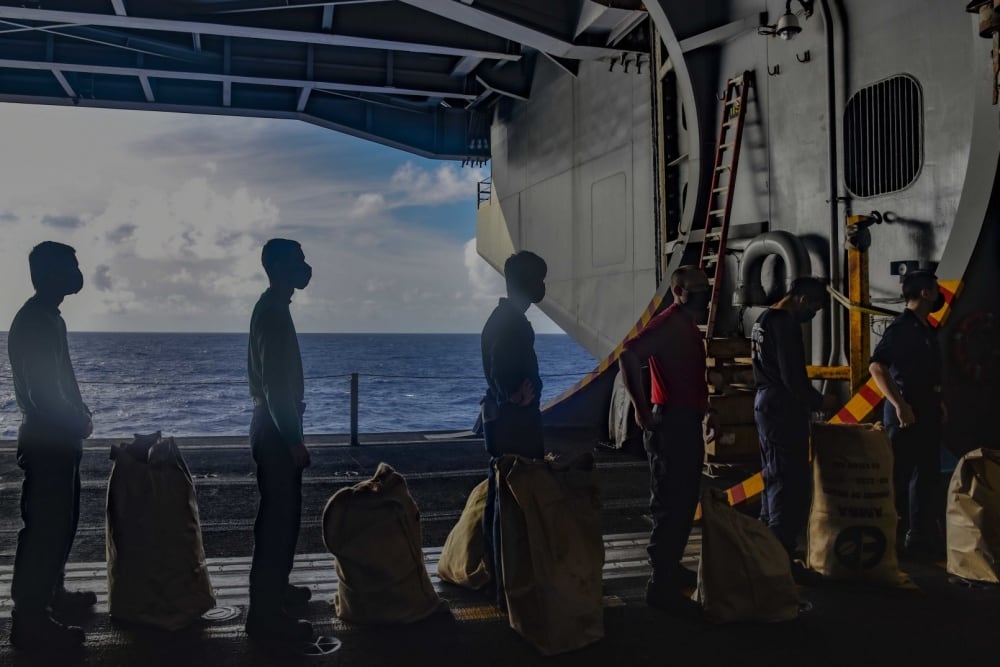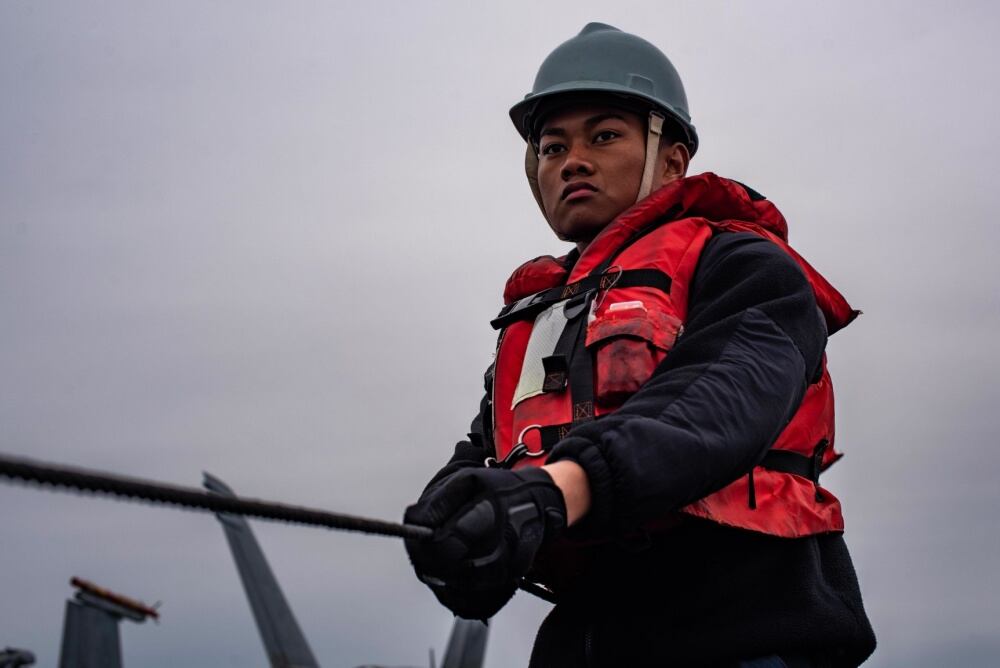With little fanfare and no public announcement, the aircraft carrier Theodore Roosevelt departed San Diego Monday ahead of its second deployment of the year.
The so-called “double pump” comes after the carrier returned home in July from a harrowing cruise that began in January and involved a COVID-19 outbreak that eventually infected a quarter of the carrier’s sailors and forced an emergency months-long detour into Guam.
During that deployment, on April 2, Capt. Brett Crozier was relieved of command after the San Francisco Chronicle reported the contents of a leaked letter he wrote to superiors in March pleading for help as his crew battled the virus outbreak while underway.
Maintaining a crew’s COVID-free bubble this year has meant that ships go right from their pre-deployment underway into their deployment proper, resulting in longer stints at sea for crews.
It remains unclear whether TR’s formal deployment began this week, but U.S. 3rd Fleet spokesman Cmdr. Sean Robertson told Navy Times Tuesday that the carrier was conducting operations in the command’s West Coast waters.
While the Navy generally issues a press release announcing the departure of aircraft carrier strike groups, nothing about TR’s departure this week was published on official channels Monday.
RELATED

By contrast, the aircraft carrier Nimitz’s June deployment involved a public announcement, as did TR’s departure from San Diego in January.
Robertson told Navy Times Tuesday that the TR’s “pullout” wasn’t seen as something that needed a press release.
“It’s not something we were trying to hide,” he said.
Navy officials have said that the TR double pump had been in the works since before the COVID cruise, but spouses from the carrier told Navy Times this fall that they wished Big Navy could have given the shipmates a break by adjusting deployment schedules.
“It’s absurd to plan back-to-back deployments in general,” one spouse, who asked to remain anonymous for fear of retaliation against their sailor, told Navy Times in September. “You’re giving nobody time to recoup or get back together.”
Instead, sailors entered a restriction of movement, or ROM, period in mid-November, according to another TR spouse, who also asked not to be named for fear that higher ups would retaliate against their sailor.
For now, no one is sure when TR will return, or when the crew will accompany the ship up to Washington state for a home port shift, the spouse said.
“We have zero indication of when they’re coming home,” the spouse said. “We’ve heard as early as May and that this home port shift means nothing … it can get pushed.”
RELATED

Robertson declined to comment on how long the TR will be gone or when it will shift home ports.
“I’m not going to discuss future operations,” he said in an email to Navy Times.
In the less than five months that the TR was home, the carrier saw at least one suicide, when Seaman Isaiah Glenn Silvio Peralta fatally shot himself while standing watch on a pier near the carrier in October.
The TR spouse asked that anyone who knows the carrier’s sailors and families keep checking in on them.
“We need it,” the spouse said. “We need that love and support right now.”
Geoff is the managing editor of Military Times, but he still loves writing stories. He covered Iraq and Afghanistan extensively and was a reporter at the Chicago Tribune. He welcomes any and all kinds of tips at geoffz@militarytimes.com.




